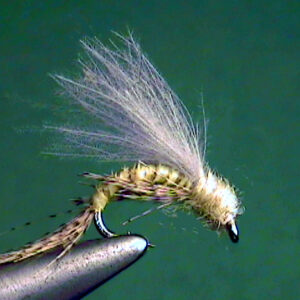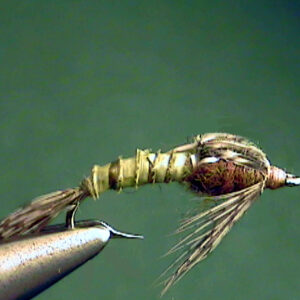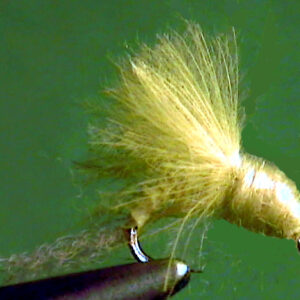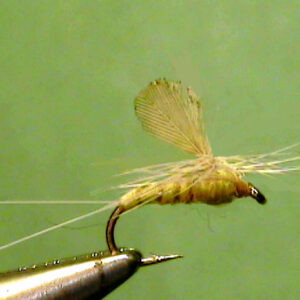Hook Size: 14
most spinners the wings are translucent or clear. The spinner fall usually occurs
in the late afternoon or evening over the same riffles the mayflies hatched in.
The females touch the surface of the water to deposit their eggs. When they are
finished, they fall spent on the water. Trout eat them when they are depositing
their eggs and after they fall spent. These spinners will collect in the current
seams and end up in eddies and calm pockets along the banks and behind
boulders and rocks. They can also end up in the heads of pools in the riffles and
runs terminate there.Presentation:
When they are depositing their eggs you want to present you spinner imitation
where you see this activity occurring. This may not be possible in some cases
because they may do so in the evenings.
It is best to fish to individual fish if you can spot them feeding on the spinners. If
you loose tract of the fly you may try moving it very slightly – just enough to see
the wake the fly makes. Just make sure you do this before the fly gets near the
fish you are trying to catch.
Present the spent spinner imitation below the riffles at the head of pools or runs.
It is very difficult at the normal late time of day to see the spinners or your
spinner imitation. You should concentrate on watching the leader at the point it
connects to the end of the fly line for any stops or changes in movement. The
trout just sip the spinners and make only a slight disturbance on the surface, so it
is not easy to see them sipping in the spent spinners.




